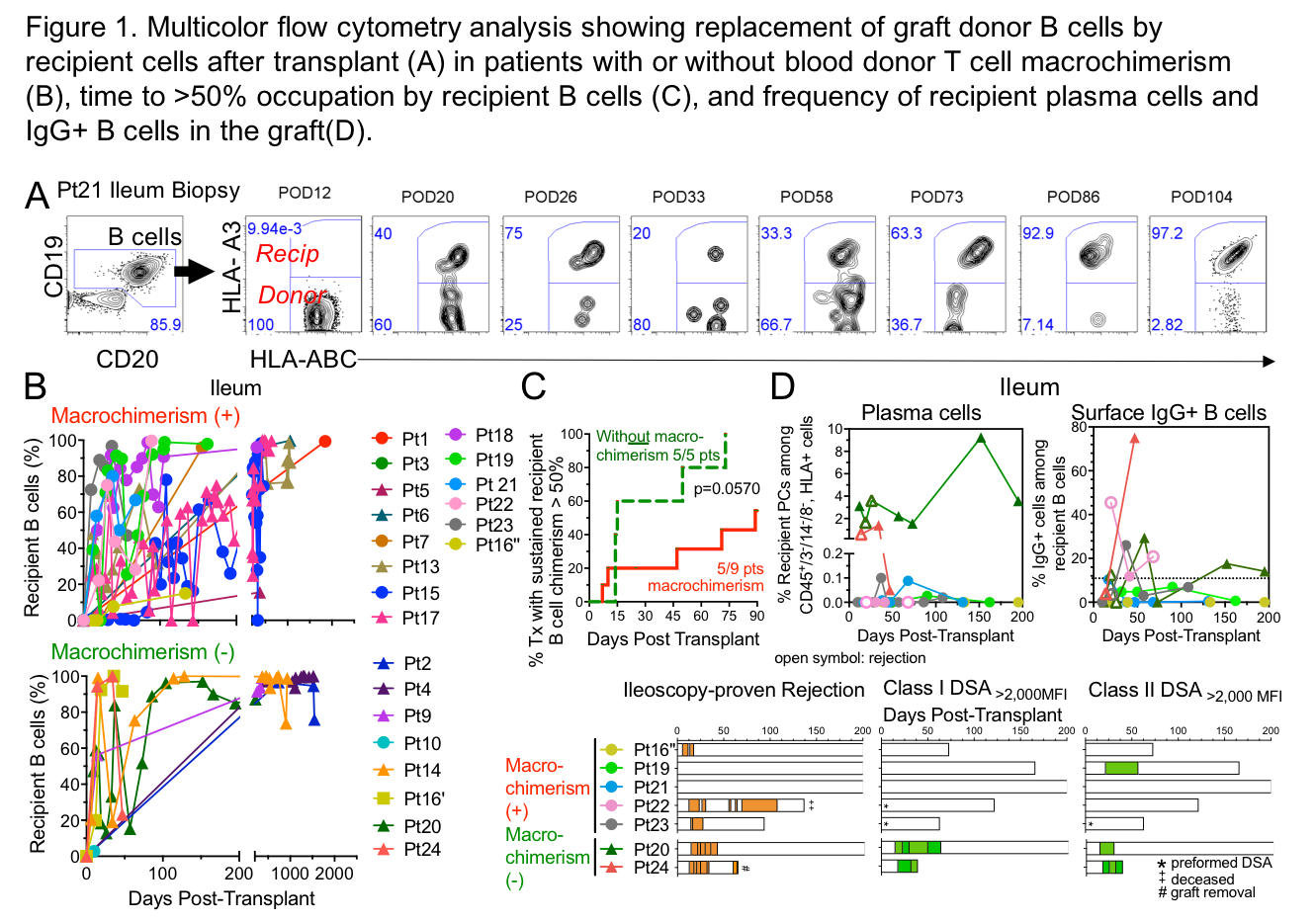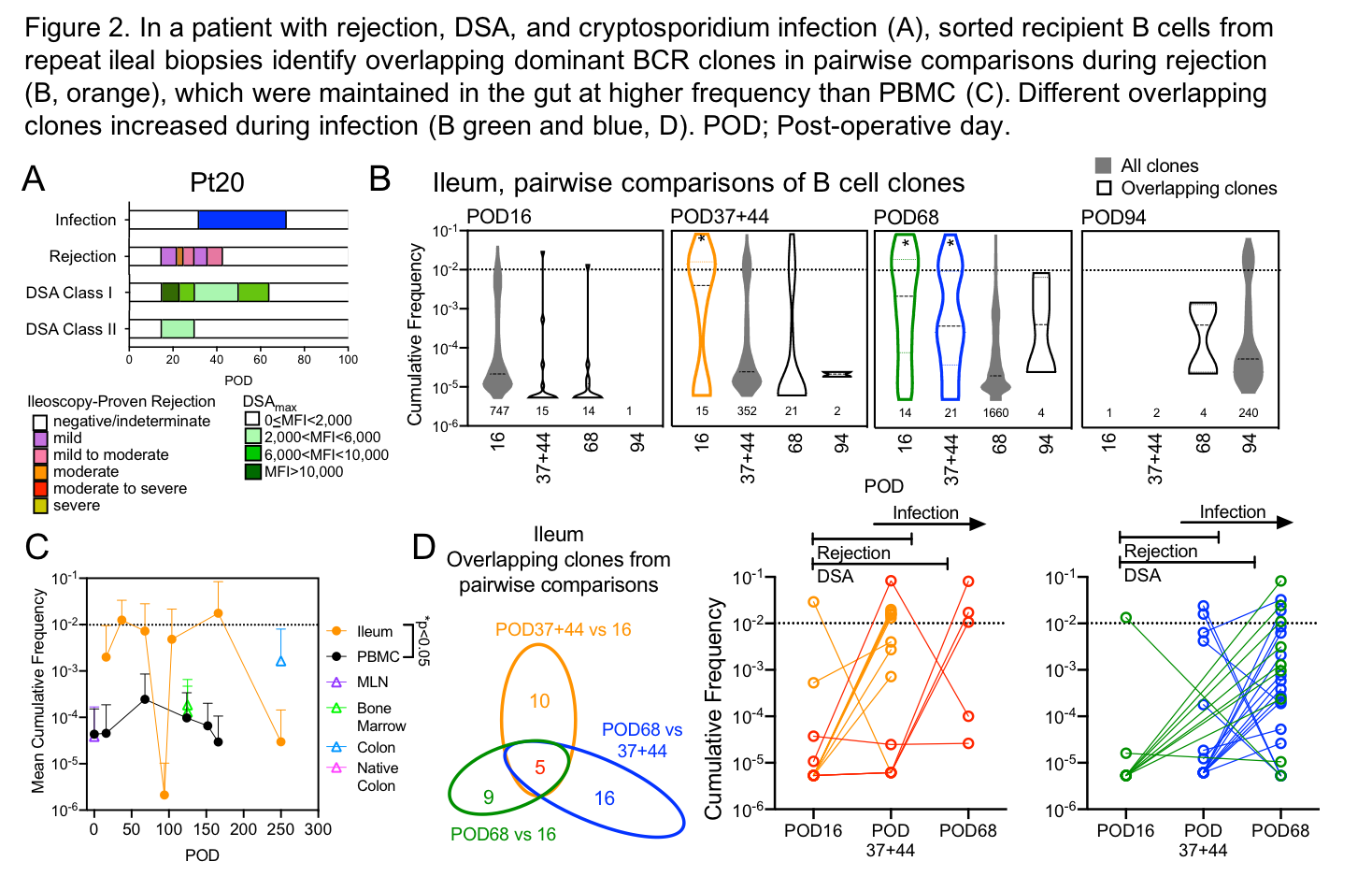Introduction: Alloantibodies produced by recipient B cells and plasma cells (PC) are associated with rejection after intestinal transplantation (ITx). The dynamics of recipient B cell repopulation of intestinal allografts, phenotypic and clonotypic changes, and roles in mediating rejection have not been defined.
Methods: Prospective collection of immunosurveillance samples was performed for 24 ITx recipients. We serially analyzed chimerism, phenotype, and clonotype (by BCR sequencing) of recipient B cells (CD19+) and PC (CD138+) in allografts and peripheral blood using multicolor flow cytometry and BCR IgH V region sequencing.
Results: Flow cytometric analysis demonstrated eventual (months to >1 year) replacement of graft donor lamina propria B cells by recipient (Fig.1). In patients with donor T cell blood macrochimerism (>4%), who demonstrated reduced rejection, replacement of B cells occurred over several months, while replacement was more rapid in patients without T cell macrochimerism (p=0.057). In the first 200 days post ITx, recipient PCs ( >1% of CD45+ cells) appeared in 2/2 patients with DSA+ mixed rejection, but in 0/5 patients without both DSA and rejection. (p=0.06). Surface IgG+ recipient B cells appeared in grafts of 4/5 patients with early rejection (DSA+ or -) compared to 0/2 patients free of rejection (p=0.04). BCR sequencing of sorted recipient B cells and PCs from 4 patients showed overlapping clones distributing across time and tissue-space. In one patient, dominant BCR clones were identified in ileal biopsies during persistent mixed rejection (POD16 vs POD37+44), and these were largely different than dominant clones identified during infection (POD68), suggesting the initially dominant clones are rejection-related (Fig.2). These clones were expanded in the intestinal allograft compared to the circulation or pre-transplant lymphoid tissues. Dominant overlapping clones were not detected in ileal samples from 3 patients free of rejection or DSA.
Conclusion: Graft recipient B cell repopulation is delayed in patients with circulating T cell macrochimerism, who have less DSA and rejection. Graft repopulating recipient B cells may acquire IgG expression and plasma cell phenotypes in association with rejection. Recipient B cell clones distribute throughout the graft and further identification of potentially alloreactive clones may facilitate understanding of how B cells participate in organ-specific alloimmunity in intestinal transplantation.


.jpg )